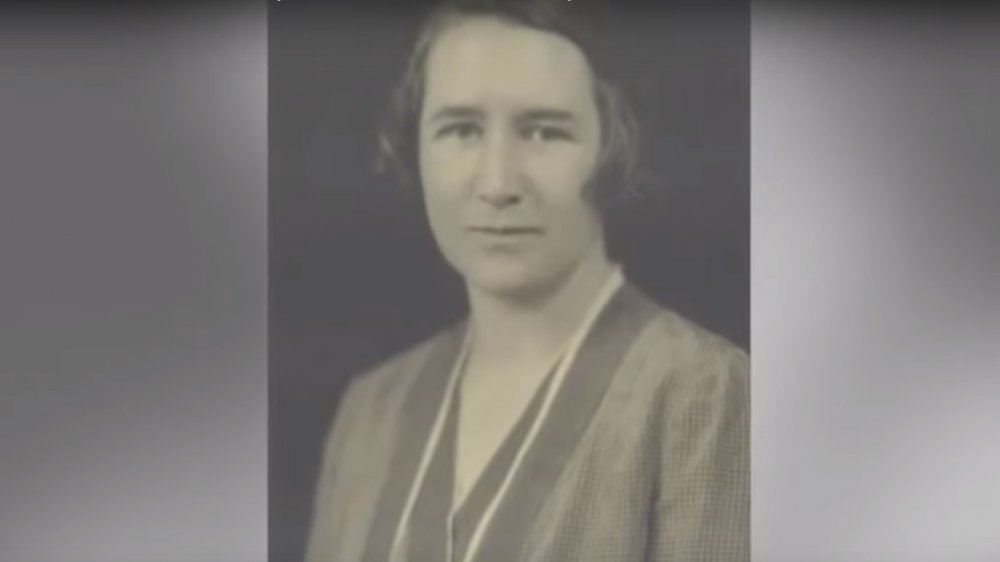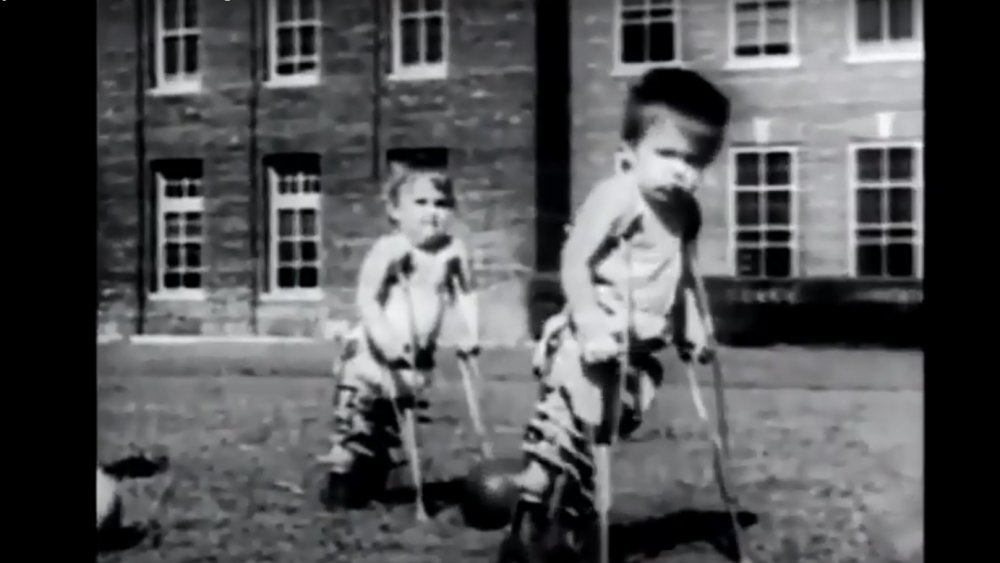The Untold Truth Of Jean Macnamara
Google Doodles crop up every so often — according to the company's web site, over 4,000 have appeared over the years — celebrating a person, place, thing, or event. If you were doing a standard internet search on April 1, 2020, you might have noticed Google's Doodle for the day, picturing a young girl with crutches seeing herself, in a mirror, without the crutches, regarded by a nearby adult woman, seen in the reflection apparently holding the girl's crutches.
The symbolism was significant: That Doodle marked the 121st birthday of Dame Jean Macnamara, an Australian born April 1, 1899, who grew up to be a physician and scientist whose research proved crucial to the defeat of poliomyelitis — the polio virus. At the time, polio would strike, seemingly without warning, leading to significant muscle weakness, sometimes paralysis — it is also called infantile paralysis — most often attacking children under age 5. The damage most often occurs in the legs, although other parts of the body can be affected, leading to death. Though many recover — Neil Young among them — muscle damage is often permanent.
Polio was especially brutal to young children
As told by Newsweek, Macnamara graduated from medical school in 1925, just as a polio epidemic struck the city of Melbourne, Australia. The virus especially crippled children, and she specialized in treating its victims as well as collaborating with other scientists to research the virus itself. According to the website of Post Polio Health International, in 1931, Dr. Macnamara and Macfarlane Burnet, himself a future winner of the Nobel Prize in Medicine, discovered that there was more than one strain of the polio virus. It was this research that proved an important key for Dr. Jonas Salk's successful polio vaccine nearly 25 years later.
Dr. Macnamara's work continued, especially with children afflicted with polio, and she contributed important techniques for treatment of and rehabilitation from the condition, including the development of techniques of splinting that helped damaged nerves and muscles regain their use. She went on to specialize in orthopaedics. She married a dermatologist and the couple had two daughters. In 1935, Dr. Macnamara was honored as a Dame Commander of the Order of the British Empire for her contributions to medical science. She died in 1968, age 69.

